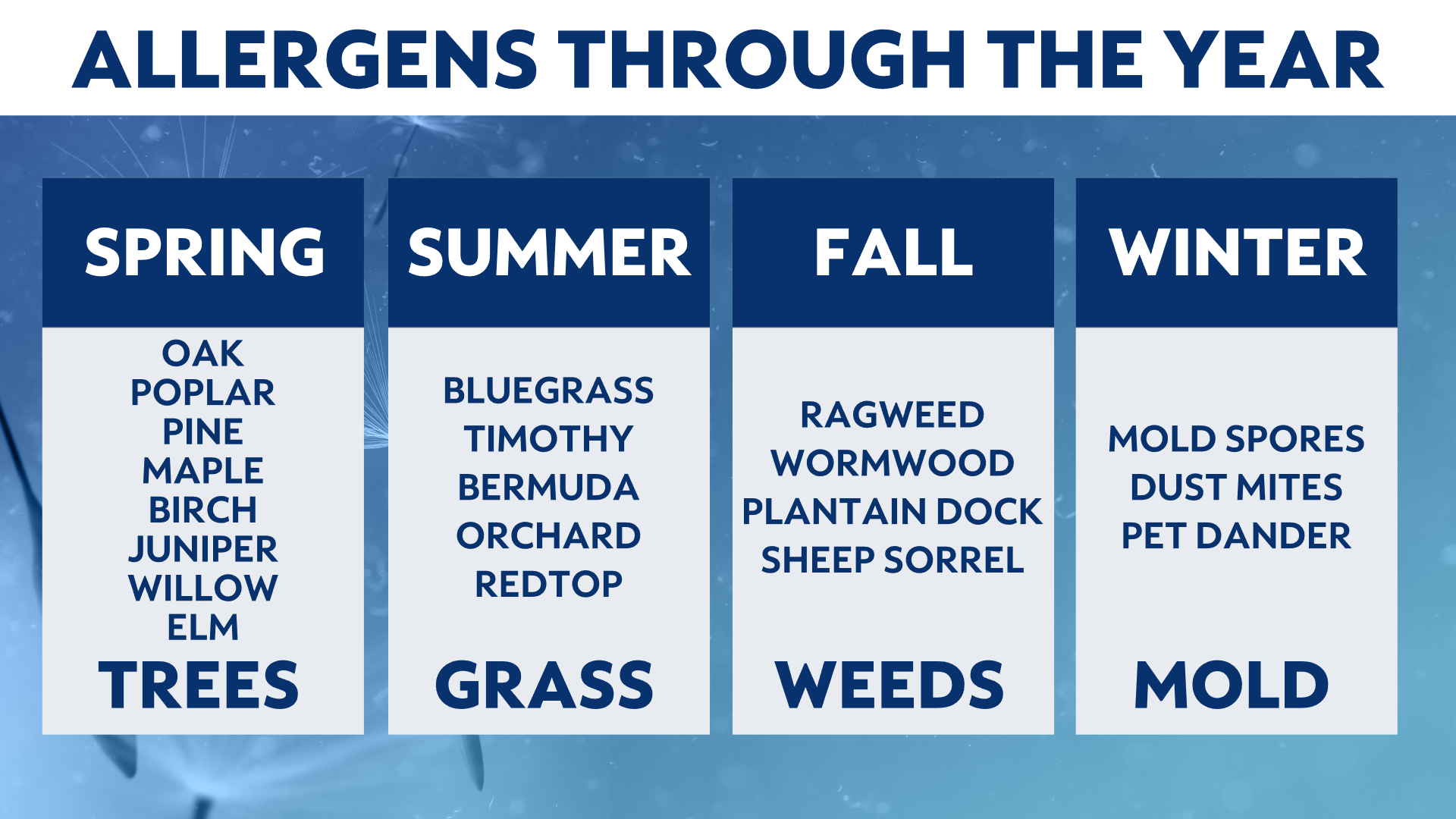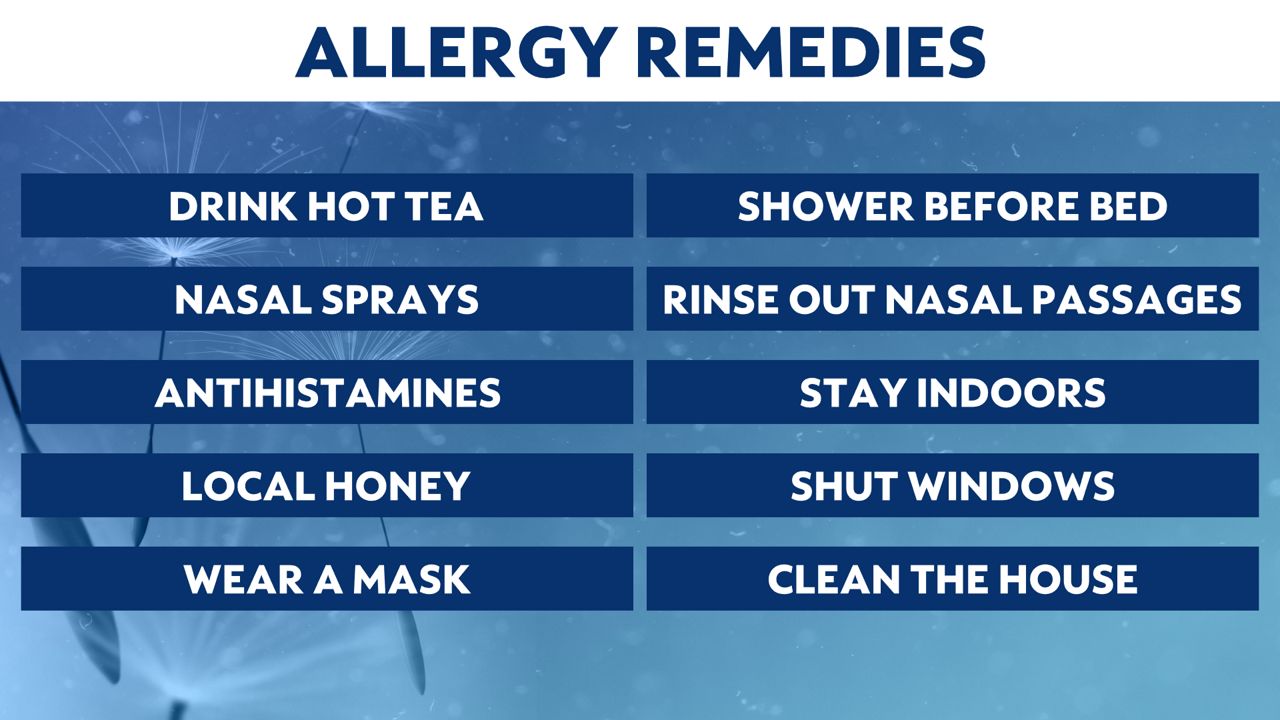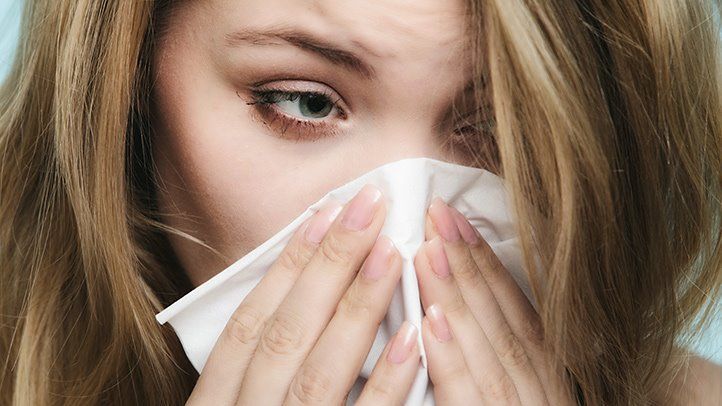If you suffer from seasonal allergies, you know that certain times of the year are worse than others.
Allergens change depending on the time of year. That's because certain allergens emerge at different times of the year. Seasonal allergies may have you sneezing and coughing with itchy, watery eyes. You may also feel congested and fatigued.
Milder winters mean trees tend to bloom and pollinate sooner rather than later. With climate change and spring coming earlier and earlier, allergy season is also coming sooner and lasting longer than before.
Mold and indoor allergens can occur year round, but tree, grass and weed pollen occur seasonally. The best way to tackle these allergies is to take medications to ease their effects on you.

Let's dig deeper and break down the top allergens month by month.
Trees are the main offenders during this time. If the winter is mild, trees can start pollinating as early as February. If the air temperature is consistently above 50 degrees, trees pollinate, sending the allergens into the air.
If the winter is cold and longer, tree pollen can be delayed into March and linger well through April. Oak and cedar trees are the first to pollinate with pine, birch and mulberry trees in April.
Next up is grass pollen through the summer months. Sometimes, grass and tree pollen can overlap, making you sneeze and wheeze more and even longer depending on your allergy. Grass pollen can also linger into July.
By late summer and into fall, weeds pollinate. The main weed that causes problems for people is ragweed. The peak of ragweed season is the middle of September, but depending on the first freeze, it can last a little longer.
During the winter when trees and grasses are in their dormant state, indoor allergens, like mold spores, are the top causes for allergies. Also, as you spend more time indoors, pet dander and dust mites may bother you as well.
You can reduce indoor allergens by changing your bedding regularly, vacuuming often and purchasing a humidifier to keep your home from becoming too dry.
Don't worry! There are some things you can do to help ease some of your seasonal allergies.




